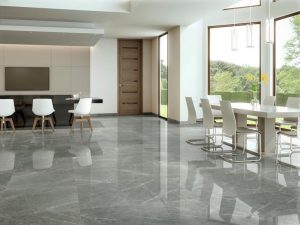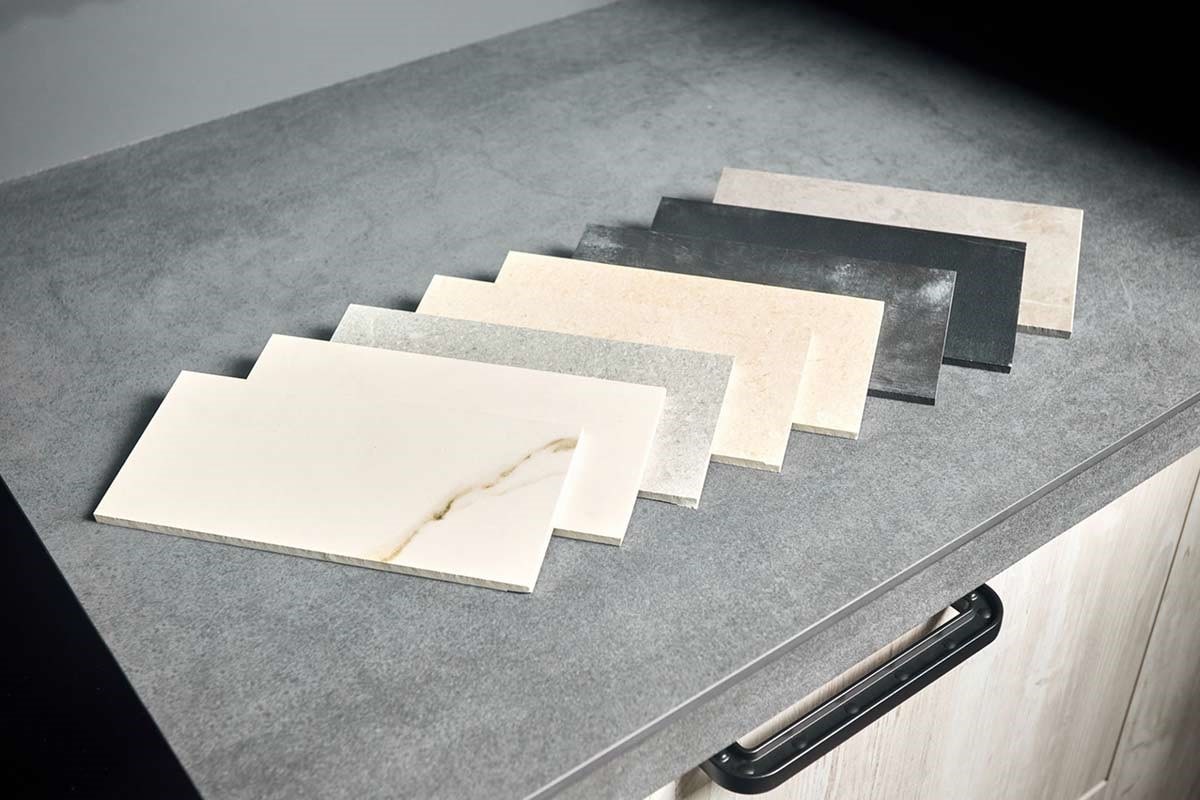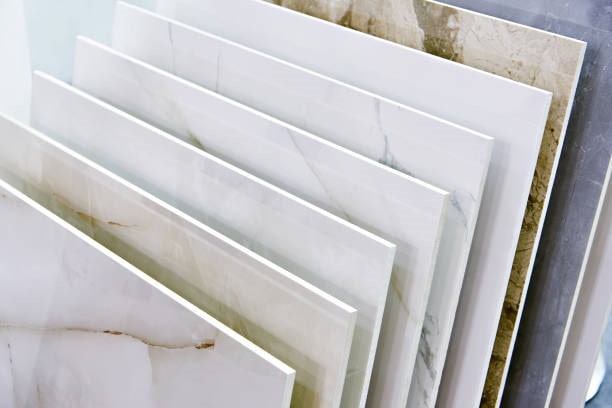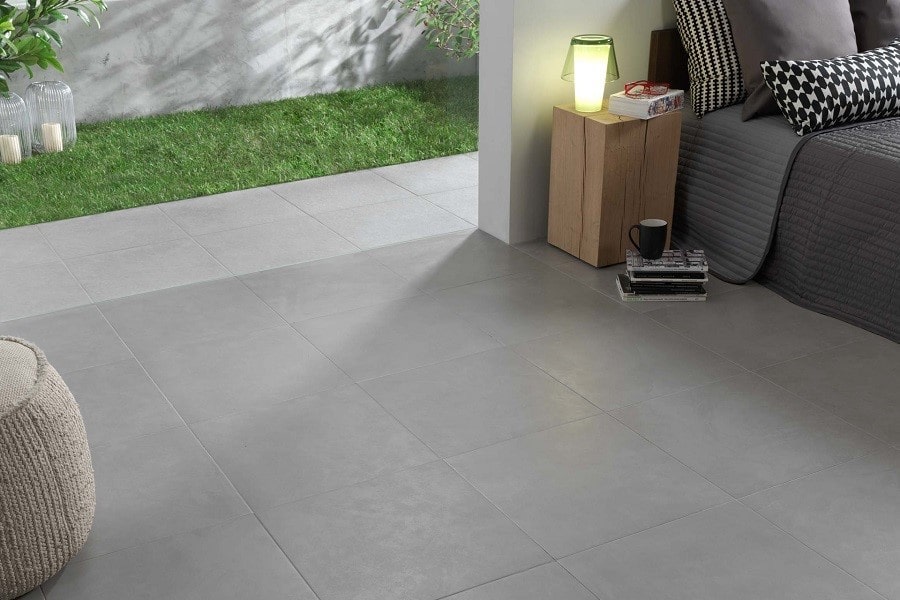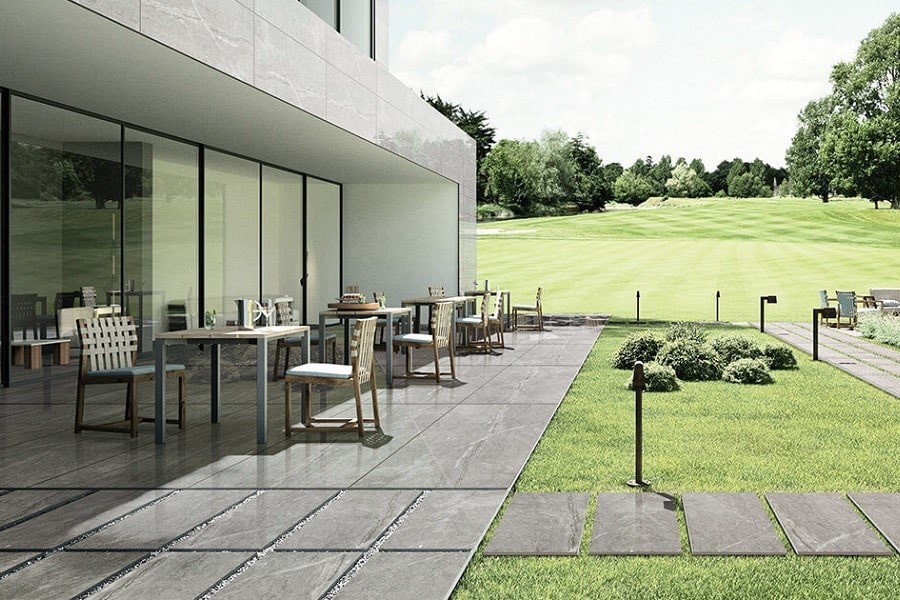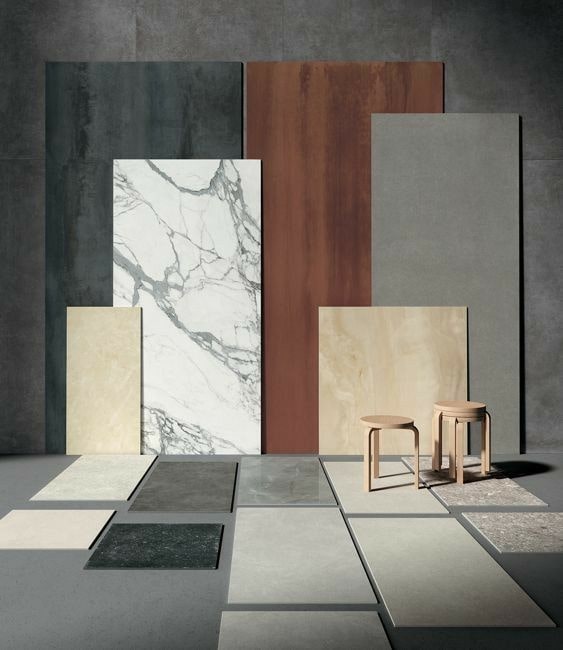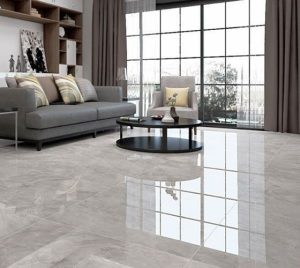Iranian porcelain ceramic tiles; suitable for export
Iran’s porcelain tile and ceramic are among the most popular export products to foreign countries. The unique features of porcelain tiles and ceramics have made these products replace regular tiles and ceramics in many foreign countries.
Iranian factories and manufacturing companies, recognizing this need, have seriously turned to the production of porcelain tiles and ceramics and the export of these products to international markets in recent years. In this article, we intend to introduce you to the most important features of porcelain tiles and ceramics and the top producers of these products in Iran.
What is Iranian porcelain ceramic tile?
As we mentioned, porcelain has recently become a suitable substitute for regular tiles and ceramics and has managed to dominate the tile and ceramic market. Simply put, porcelain is made from a combination of several types of mineral soils such as bentonite, kaolin, and feldspar with other raw materials such as clay, silica, etc. To produce Iran’s porcelain tile and ceramic, raw materials must be placed under high pressure and heat (between 1200 to 1400 degrees Celsius) in special kilns.
Placing these raw materials under high pressure and heat results in a final product that has a higher resistance and strength compared to regular tiles and ceramics. One of the reasons for the widespread use of porcelain tiles and ceramics in the construction industry is related to this high resistance and strength of these products. Regarding the raw materials that make up porcelain, it should be noted that feldspar is one of the most important and useful minerals of igneous rocks and bentonite is one of the semi-clays or swelling minerals.
How to distinguish ceramic from porcelain
Distinguishing ceramic from porcelain at first glance is a difficult task due to the visual similarities of these two materials. One way to distinguish ceramic from porcelain is to examine the surface of the tiles to see how rough or smooth they are. This can be done both visually and by running your hand over the surface of the tiles. The surface of porcelain tiles, due to having fine particles, is smoother than ceramic.
Considering this point, when you touch the tiles and encounter a rough or uneven surface, you can be sure that the tile in question is not porcelain.
Types of Iran’s porcelain tile and ceramic
Generally, Iran’s porcelain tile and ceramic are produced in two types: glazed and polished. These two types of porcelain have differences in terms of the production process. These differences directly affect the features and properties of the final products. For the production of glazed porcelain tile and ceramic, the production process becomes longer, and additional steps must be taken to prepare the final product.
In the process of making and producing Iran’s glazed porcelain tile and ceramic, a layer of liquid glass is applied to the white clay, which is one of the main materials that make up porcelain products. After applying this liquid glass coating, the baking process of the tile and ceramic can begin.
Using this glass coating for the production of glazed porcelain makes these products more resistant to moisture and stain formation compared to polished porcelain. However, it should be noted that adding a glass layer creates a major weakness in glazed porcelain.
Adding a glass coating to glazed porcelain makes these products have less friction and therefore more slipperiness compared to polished porcelains. For this reason, glazed porcelain tiles and ceramics cannot be used in places like kitchens, bathrooms, etc. Polished porcelain is usually used for this purpose.
Top manufacturer of porcelain tile and ceramic in Iran
Iran’s porcelain tile and ceramic are very popular in global markets, and various countries such as Russia, Persian Gulf countries, African countries, etc., are the main customers of these products. These foreign countries go to reputable and well-known Iranian factories and companies to buy porcelain tile and ceramic.
One of the top and most successful companies active in the field of production and export of porcelain tiles and ceramics is Sorena Company. Currently, a large part of the export of porcelain products to foreign countries belongs to Sorena Tile and Ceramic Company.
Sorena Company started its operations from 1995 and since then, with the expansion and development of its activities, it has become one of the top producers of porcelain products. The nominal capacity of this company’s production currently exceeds 10 million square meters per year.
The most important reasons for the success of Sorena Tile and Ceramic in international markets can be mentioned as follows:
- Use of the most advanced and up-to-date machinery and equipment for the production of porcelain tile and ceramic
- Access to the highest quality foreign and domestic raw materials
- Creativity in producing a variety of porcelain products in different dimensions and sizes
- Having specialized personnel and advanced laboratories to improve the properties of tiles and ceramics
Difference between Iran’s porcelain tile and ceramic and regular tile and ceramic
As we mentioned, Iran’s porcelain tile and ceramic are very popular in international markets and are quickly sold in these markets. Generally, it can be said that in many cases, porcelain tiles and ceramics are replacing regular tiles and ceramics.
One of the questions that arise for various people is what are the differences between porcelain tiles and ceramics and regular products that have led to the superiority and popularity of porcelain products in domestic and foreign markets?
Generally, the difference between porcelain and regular products can be examined from several aspects:
- From the perspective of the production method
- In terms of water absorption rate
- Resistance to temperature changes
- Type of application
- In terms of price
- Hardness and resistance to cutting
- The environment in which it is used
Paying attention to each of these points when comparing different types of porcelain and regular tiles and ceramics can show us the reason for the popularity of porcelain products in international markets. In the following, we will examine the existing differences between porcelain and regular products in each of these aspects.
Difference between porcelain and pegular tile and ceramic in terms of production method
One of the most important differences between Iran’s porcelain tile and ceramic and regular tiles and ceramics is related to their production method and process. Also, Iranian factories use different raw materials to produce these products. For the production of porcelain tile and ceramic, materials such as white clay, feldspar, betonies, sand, etc., are used. To bake this type of tiles and ceramics, raw materials are exposed to higher pressure and temperature. This factor makes the final product have higher strength, density, and compactness.
On the other hand, for the production of regular tiles and ceramics, red or brown clay is used. Also, the raw materials used for the production of regular tiles and ceramics are exposed to less pressure and heat. For this reason, these regular products have less strength and density compared to porcelain tiles and ceramics.
Difference in terms of water absorption rate
The water absorption rate is one of the most important parameters for determining the quality and efficiency of different types of tiles and ceramics. Another difference between porcelain tiles and ceramics and regular ones is related to this issue of water absorption rate. Generally, the goal in producing tiles and ceramics is to reduce the water absorption rate as much as possible.
One of the important features of Iran’s porcelain tile and ceramic that distinguishes these products from regular tiles and ceramics is the water absorption rate of these products. Iranian factories, due to having the most advanced machinery and up-to-date technology in the world, currently have the ability to produce porcelain tile and ceramic with a water absorption rate close to zero. The low water absorption rate of porcelain products has made these tiles and ceramics highly sought after in foreign countries.
Resistance of porcelain and regular tile and ceramic against temperature changes
Another important difference between porcelain tiles and ceramics and regular ones is related to their resistance to temperature changes. The higher the resistance of these products to thermal stresses, the less likely they are to fracture and crack.
When we examine this important factor in porcelain and regular products, we find that Iran’s porcelain tile and ceramic show a very high resistance to temperature changes and are superior to regular types of ceramics and tiles.
The superiority of porcelain products over regular tiles and ceramics becomes more apparent when the air temperature drops below zero. At sub-zero temperatures, regular tiles and ceramics quickly crack and break. However, porcelain tiles and ceramics maintain their integrity even at sub-zero temperatures and do not easily crack or break.
Iran’s porcelain tile and ceramic can be used in outdoor environments
One of the major concerns for those involved in construction projects is choosing the right material for outdoor spaces that are exposed to environmental and weather conditions.
Exposing different materials to these environmental conditions usually reduces their durability and lifespan. One of the most important features of Iran’s porcelain tile and ceramic that distinguishes these products from regular tiles and ceramics is that you can use porcelain tiles and ceramics to implement your construction projects and build outdoor spaces.
Porcelain tiles and ceramics resist environmental factors well and have a very long lifespan. On the other hand, ordinary tiles and ceramics are not suitable for use in outdoor environments and are solely used for constructing indoor spaces of buildings.
The difference in price between porcelain and ordinary products
Another major concern for those looking to buy tiles and ceramics is the price of these products. Generally, you have to pay more for higher quality products. Iranian porcelain tiles and ceramics are no exception to this rule and due to their high quality and unique features; they are priced higher than ordinary tiles and ceramics. Therefore, some people looking to save on their expenses may opt for ordinary tiles and ceramics.
One important point to note is that you can’t always sacrifice quality for price. Although buying porcelain tiles and ceramics means the customer has to pay more, they can benefit from features such as durability and high resistance. These unique features can reduce costs in the long run. This is why advanced foreign countries are looking to use porcelain tiles and ceramics in their construction projects.
Iranian porcelain ceramic tiles
When it comes to Iranian porcelain ceramic tiles, one cannot help but be captivated by their sheer beauty and exquisite craftsmanship. These tiles, which bear the mark of a rich cultural heritage, have long been revered for their unparalleled artistry and attention to detail.
Iranian porcelain ceramic tiles are renowned for their vibrant colors and intricate designs. Each tile is meticulously handcrafted by skilled artisans who have honed their craft over generations. These artisans pour their passion and expertise into every tile, ensuring that each piece is a true work of art.
The process of creating Iranian porcelain ceramic tiles begins with a careful selection of the finest clay, feldspar, and quartz. These natural materials are combined, shaped, and then fired at high temperatures to achieve strength and durability. The result is a tile that can withstand the test of time, adding a touch of elegance to any space.
One of the distinguishing features of Iranian porcelain ceramic tiles is the use of traditional motifs and patterns. Inspired by Persian art, architecture, and calligraphy, these designs tell stories of ancient civilizations and cultural richness. Delicate floral patterns, geometric shapes, and intricate calligraphy grace the surface of these tiles, transporting the beholder to a world of timeless beauty.
Not only are Iranian porcelain ceramic tiles visually stunning, but they also offer practical benefits. Their water resistance and durability make them ideal for areas prone to moisture, such as bathrooms and kitchens. Furthermore, their smooth surface makes them easy to clean and maintain, ensuring that their beauty remains intact for years to come.
The popularity of Iranian porcelain ceramic tiles extends far beyond the borders of Iran. Architects, interior designers, and homeowners worldwide seek out these tiles to add a touch of sophistication and cultural heritage to their projects. Whether it’s a grand palace or a modern home, Iranian porcelain ceramic tiles effortlessly elevate any space to new heights of elegance.
The production of Iranian porcelain ceramic tiles is a labor-intensive process that requires the expertise of skilled artisans. These artisans take immense pride in preserving the traditional methods while embracing innovation and contemporary design elements. Their dedication ensures that the legacy of Iranian porcelain ceramic tiles lives on for future generations to appreciate.
In conclusion, Iranian porcelain ceramic tiles are a testament to the artistry and cultural heritage of Iran. Their breathtaking designs, exceptional quality, and practical advantages make them a sought-after choice for interior design projects. Whether it’s their vibrant colors, intricate patterns, or the stories they tell, Iranian porcelain ceramic tiles are a true reflection of the mastery and beauty that can only be found in the heart of Persian craftsmanship.
Export of Iranian porcelain tiles and ceramics with Ghanei Trading services
Nowadays, many advanced countries have turned to the use of porcelain tiles and ceramics for their construction projects. The main reasons for the popularity of porcelain products in international markets include high strength and durability, resistance to severe temperature changes, suitability for outdoor environments, near-zero water absorption, and more. Reputable Iranian factories, such as Sorena Tile and Ceramic Company, have focused on producing porcelain tiles and ceramics in various designs, colors, and sizes, recognizing the needs of global markets.
Ali Ghanei Trading Company is one of the well-established collections in the field of exporting various types of tiles and ceramics to different parts of the world. Individuals and collections intending to operate in global markets and sell Iranian porcelain tiles and ceramics can collaborate with our expert and professional team.
What factors influence the price of porcelain tiles and ceramics?
The area, design and color, manufacturer brand, quality of raw materials, and machinery and equipment used for production are among the factors that can influence the price of porcelain tiles and ceramics.
What visual features do porcelain products have?
Iranian porcelain tiles and ceramics usually have a shiny and glossy appearance and bear a great resemblance to natural materials like marble. These products offer a wide variety of designs and colors.
Which type of tiles and ceramics are more popular in foreign markets?
Generally, most advanced foreign countries have turned to the use of porcelain tiles and ceramics for various construction projects.



